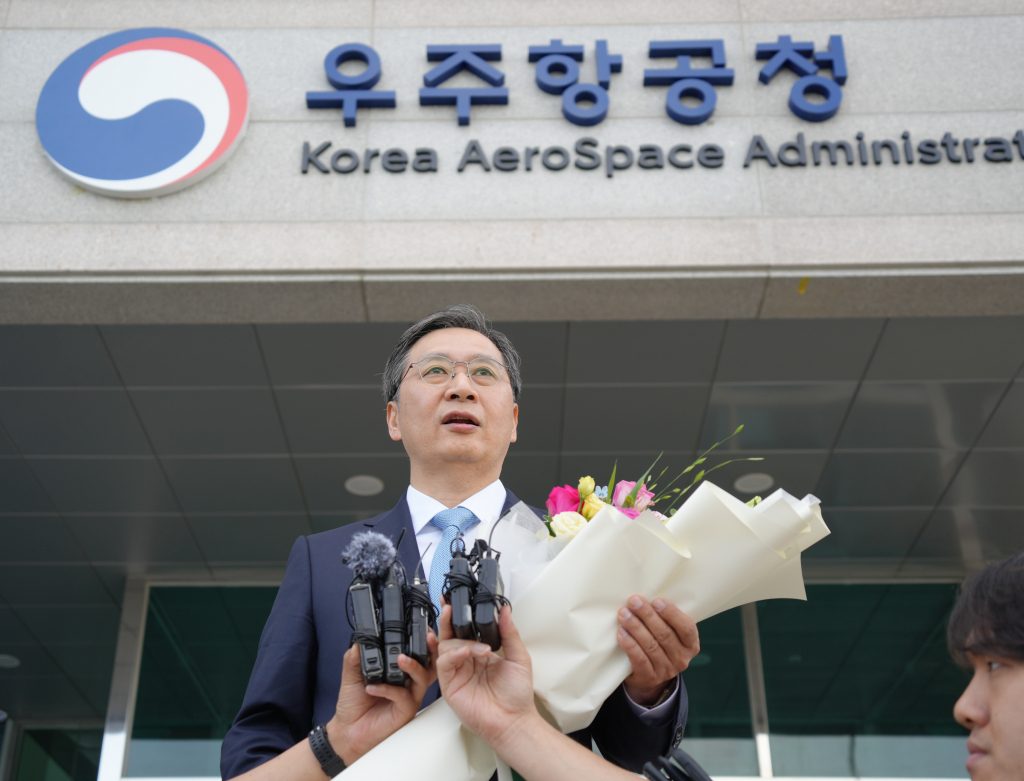South Korea's newly established Korea Aerospace Administration (KASA) is setting ambitious goals in spaceflight as it aims to act as the “control tower” for the nation's expanding space endeavors. The Committee on Space Research (COSPAR) 45th Scientific Assembly provided a platform for KASA to present its plans to an international audience, just under two months since the agency began operations on May 27.
“This year marks a significant milestone in the history of Korea's space development with the establishment of KASA,” stated Youngbin Yoon, KASA administrator, during the opening ceremonies on July 15. He emphasized that while space activities had been pursued in various research centers and universities for decades, there was no single agency overseeing civil space activities. “In response to public opinion and recognizing the need for a dedicated government agency, Korea Aerospace Administration, KASA, was officially established,” Yoon added.
Yoon highlighted that KASA aims to serve as the “control tower for national space affairs and international cooperation,” with objectives centered on space transportation, satellite technology, space exploration, and aviation. The agency has set long-term targets, including sending a robotic lander to the moon by 2032 and to Mars by 2045.
KASA's deputy administrator, John Lee, who previously spent three decades at NASA, discussed the agency's goals in a separate address on July 17. He noted that achieving these goals will require increased funding. Currently, South Korea invests about one trillion won ($720 million) in space, a figure projected to rise by 50% by 2027.
Lee outlined KASA's plans across four key areas. In space transportation, KASA will continue development of the Nuri (KSLV) rocket, invest in reusable launch vehicle technology, and expand launch facilities. In satellite technology, KASA aims to support the creation of very-high-resolution imaging satellites with a resolution of 15 centimeters. “It's a lofty goal, but we're going to put that goal out there and try to get there,” Lee said. The agency also plans to invest in optical communications and a regional navigation system.
For space exploration, KASA is planning lunar and Martian landers, as well as a spacecraft to observe the sun from the Earth-sun L4 Lagrange point, a location unique for its potential to offer new insights into solar flares. “If you have a disturbance starting from the sun that's going to come and hit the Earth, the particles move in a spiral fashion following the magnetic field pattern,” explained Sami Solanki, a space scientist at Germany's Max Planck Institute, during the COSPAR conference. “The L4 point is exactly above where this will happen.”
Lee also noted that KASA will be responsible for developing South Korea's space policy and overseeing commercial space activities, while engaging in international cooperation. This includes bilateral and multilateral discussions with other nations.
On July 15, during the COSPAR conference, KASA held its first bilateral meeting with NASA. Yoon met with NASA Deputy Administrator Pam Melroy to explore how to build upon past collaborations between NASA and Korean organizations, such as the Korea Pathfinder Lunar Orbiter mission.
“Looking ahead, NASA and KASA are exploring a wide range of opportunities and fostering innovation in new areas,” NASA stated on July 16, without mentioning specific projects.
